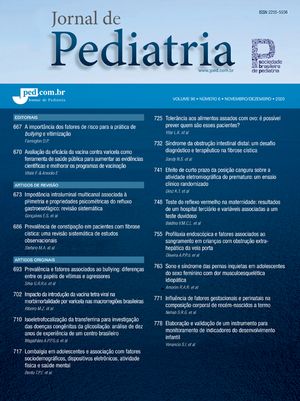
To present the implications of genetics, particularly of cytogenetic techniques, for the diagnosis and prognosis of leukemia.
SourcesA survey of articles selected from MEDLINE, American Society of Hematology educational programs, the CAPES web portal, the National Comprehensive Cancer Network and textbook chapters.
Summary of the findingsSince the discovery in 1960 by Peter C. Nowel and David Hungerford of the 9:22 translocation (the Philadelphia chromosome), genetics has come to play an important role in hematology, in this case making it possible to diagnose chronic myeloid leukemia and opening doors to research avenues for the whole field of oncology. One point of great interest refers to the implications of these findings for the prognosis of a range of types of leukemia. In acute myeloid leukemia, the karyotype is of fundamental importance to postremission treatment decisions, and molecular factors determine the treatment of individuals with normal karyotypes. In chronic myeloid leukemia, clonal evolution is associated with progression to the blast crisis. Patients on imatinib who cease responding may have mutations on their ABL gene. Finally, in acute lymphoblastic leukemia, factors such as hyperdiploidy and t 12:21 are associated with good prognosis, whereas carriers of t 4:11 and t 9:22 are considered high risk patients.
ConclusionsGenetics has come to stay as far as hematology and, in particular, the management of leukemia and its prognostic factors are concerned. These tests should always be carried out and the appropriate treatment adopted in the light of their results, so that optimal patient outcomes can be achieved.
Apresentar as implicações da genética, particularmente das técnicas de citogenética, no diagnóstico e prognóstico das leucemias.
Fontes dos dadosLevantamento de artigos selecionados no MEDLINE, através dos programas educacionais da American Society of Hematology, Portal de Periódicos da CAPES, National Comprehensive Cancer Network e capítulos de livros.
Síntese dos dadosDesde a descoberta por Peter C. Nowel e David Hungerford da translocação 9:22 (cromossomo Philadelphia) em 1960, a genética passou a ter importante papel na hematologia, possibilitando, neste caso, o diagnóstico da leucemia mielóide crônica e abrindo portas para a pesquisa nesta área para toda a oncologia. Um ponto de altíssimo interesse é a implicação destes achados no prognóstico de diversos tipos de leucemia. Na leucemia mielóide aguda, o cariótipo é fundamental na decisão da terapêutica pós-remissão, e fatores moleculares definem o tratamento em indivíduos de cariótipo normal. Na leucemia mielóide crônica, a evolução clonal está associada à evolução para a fase blástica. Pacientes em uso de imatinibe com perda de resposta podem apresentar mutações do gene ABL. Finalmente, na leucemia linfóide aguda, fatores como hiperdiploidia, t 12:21, estão associados a bom prognóstico, ao passo que portadores da t 4:11 e t 9:22 são considerados de alto risco.
ConclusãoA genética veio para ficar na hematologia e, em particular, no manuseio da leucemia e seus fatores prognósticos. Para a melhor evolução do paciente, estes estudos devem ser sempre realizados, e a conduta terapêutica adequada deve ser tomada.









